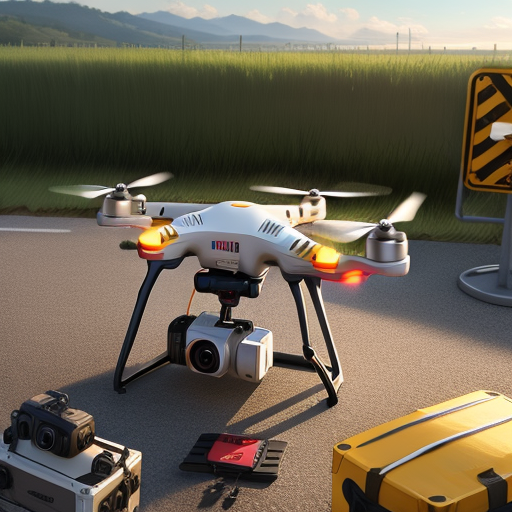
Drones, also known as unmanned aerial vehicles (UAVs), have gained significant popularity over the years. Whether you’re a photography enthusiast, an aspiring filmmaker or simply an adventure seeker, you can gain a unique perspective and an exhilarating experience by flying drones. However, flying drones does come with a level of responsibility. It is crucial to prioritize safety when operating a drone. In this beginner’s guide, we will discuss essential tips and techniques to ensure the safe and responsible use of drones.
1. Familiarize Yourself with Local Laws
Before taking flight, it is essential to familiarize yourself with the regulations and laws governing drone usage in your area. Different countries and regions have specific rules regarding where and how you can fly drones. Some places may require registration or permits, while others may have restricted airspace. Make sure to research and understand these regulations to avoid legal complications.
2. Take a Beginner’s Drone Course
Enroll in a beginner’s drone course or seek guidance from experienced drone operators. These courses provide valuable insights into drone operations, safety procedures, flight techniques and troubleshooting. Proper training helps beginners understand the intricacies of drone flight, aerial photography and how to react in various situations.
3. Choose the Right Drone
When starting out, it’s important to select a drone that suits your requirements and skill level. Beginner drones generally have built-in safety features, making them more beginner-friendly. Look for drones with intelligent flight controls, GPS navigation and collision-avoidance systems. These features can help prevent accidents and ensure a safe flying experience.
4. Pre-flight Checklist
Creating a pre-flight checklist is imperative to ensure safe and efficient drone operations. Before each flight, run through the following checks:
- Inspect the drone and make sure it is in good working condition.
- Check propellers for any damage or loose connections.
- Ensure the battery is fully charged and properly inserted.
- Clear any dust or debris from the drone’s body and camera lens.
- Ensure the remote control or smartphone is properly connected.
- Check and update the drone’s firmware if necessary.
5. Find a Suitable Flying Location
Choose a suitable and legal location for flying your drone. Avoid congested areas, airports and places where drone activities are prohibited. Look for wide open spaces, such as parks or designated flying areas, where you have enough room to maneuver without interfering with people or objects. Avoid flying near power lines, tall buildings and trees.
6. Fly Responsibly
When flying your drone, make sure to follow these responsible practices:
- Always maintain visual contact with your drone.
- Do not fly over private property without permission.
- Respect the privacy of others and avoid recording or intruding on their personal space.
- Do not fly near wildlife, as it can disturb or harm them.
- Keep a safe distance from people, vehicles and structures.
7. Understand Weather Conditions
Weather conditions have a significant impact on drone flight performance and safety. Avoid flying in strong winds, rain or thunderstorms, as these conditions can destabilize the drone and increase the risk of accidents. Keep an eye on weather forecasts and plan your flights accordingly.
8. Be Prepared for Emergencies
Even with careful planning, emergencies can occur during drone flights. Prepare yourself by doing the following:
- Learn how to manually land the drone in case of technical or battery failure.
- Carry a first aid kit and fire extinguisher in case of accidents.
- Be aware of emergency landing options and potential hazards in the vicinity.
9. Respect No-fly Zones
Make sure you respect the designated no-fly zones in your area. These areas include airports, military installations, government buildings and other sensitive locations. Certain drone models have built-in geofencing systems that prevent flights in restricted areas. Always check for such zones through apps or online resources before taking off.
Conclusion
Flying drones safely is a responsibility that every drone operator must uphold. By following the tips and techniques outlined in this beginner’s guide, you can ensure a safe and enjoyable drone-flying experience. Remember to stay informed about local regulations, choose the right drone and always prioritize safety. Happy flying!
